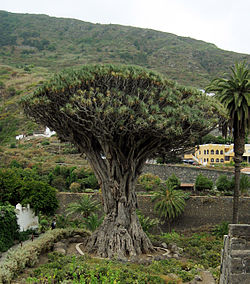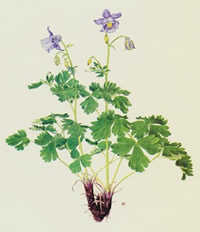| PLANT NAME | STATUS [3] | RANGE/REGION |
|---|
| Akamas Centaury (Centaurea akamantis) | CR | Cyprus |
| Allium iatrouinum | CR | Greece |
| Antirrhinum subbaeticum | EN | It originated from Italy but was introduced into Spain |
| Apid den Bermejo (Apium bermejoi) | CR | Spain |
| Arran Service-tree ( Sorbus pseudofennica ) | CR | United Kingdom |
| Astragalus cavanillesii | CR | Spain |
| Avon Gorge Whitebeam ( Sorbus avonensis ) | CR | United Kingdom |
| Azores Juniper ( Juniperus brevifolia ) | VU | Portugal (Azores) |
| Barbaricina Colombine (Aquilegia barbaricina) | CR | Italy |
| Berberis maderensis | CR | Portugal |
| Betula celtiberica | ??? | Spain (possibly Great Britain) |
| Betula klokovii | CR | Ukraine |
| Brimeura duvigneaudii | CR | Spain |
| Bryoxiphium madeirense | EN | Portugal |
| Buglosse Crépu ( Anchusa crispa ) | CR | France, Italy |
| Bully Tree ( Sideroxylon marginatum ) | CR | Cape Verde, Portugal, Spain |
| Bupleuro delle ( Bupleurum elatum ) | CR | Madoni Italy |
| Bupleuro di Marettimo ( Bupleurum dianthifolium ) | CR | Italy |
| Calligonum triste | CR | Kazakhstan |
| Canary Islands Juniper ( Juniperus cedrus ) | CR | Portugal (Madeira); Spain (Canary Is.) |
| Canary Strawberry Tree ( Arbutus canariensis ) | ??? | Spain (Canary Islands) |
| Canutillo del Teide ( Silene nocteolens ) | CR | Spain (Canary Is.) |
| Cardón de Jandía ( Euphorbia handiensis ) | VU | Spain (Canary Is.) |
| Carum foetidum | ??? | Algeria, Spain |
| Casey's Larkspur ( Delphinium caseyi ) | CR | Cyprus |
| Centranthus amazonum | CR | Italy (Sardegna) |
| Centaurea borjae | EN | Spain |
| Centranthus trinervis | EN | France |
| Cerastium sventenii | EN | Spain (Canary Islands) |
| Cheddar Whitebeam ( Sorbus cheddarensis ) | CR | United Kingdom |
| Cineraria ( Senecio elodes ) | EN | Spain |
| Conservilla Majorera ( Salvia herbanica ) | CR | Spain (Canary Is.) |
| Cornish Path Moss ( Ditrichum cornubicum ) | CR | United Kingdom |
| Cretan Zelkova ( Zelkova abelicea ) | EN | Greece |
| Crimean Rowan ( Sorbus tauricola ) | CR | Ukraine |
| Cyprus Cedar (Cedrus brevifolia) | VU | Cyprus |
| Derbyshire Feather-moss ( Thamnobryum angustifolium ) | CR | United Kingdom |
| Distichophyllum carinatum | CR | Austria, Germany and Switzerland |
| Dracaena draco (Canary Islands dragon tree) | EN | Portugal (Madeira), Spain (Canary Islands) |
| Echinodium setigerum | EN | Portugal (Madeira) |
| Echinodium spinosum | EN | Portugal (Madeira) and Spain (Canary Is.) |
| Echium acanthocarpum | CR | Spain (Canary Islands) |
| Echium callithyrsum | VU | Spain (Canary Is.) |
| Echium gentianoides | VU | Spain (Canary Is.) |
| Echium handiense | CR | Spain (Canary Is.) |
| Echium portosanctense | CR | Portugal |
| Erysimum kykkoticum | CR | Cyprus |
| Evans's Whitebeam ( Sorbus evansii ) | CR | United Kingdom |
| Falsa Sanicola ( Petagnaea gussonei ) | EN | Italy |
| Flueggea anatolica | EN | Turkey |
| Gradsteinia torrenticola | VU | Spain |
| Gyrocaryum oppositifolium | VU | Spain |
| Harz' Mehlbeere ( Sorbus harziana ) | CR | Germany |
| Heberdenia excelsa | VU | Portugal (Madeira), Spain (Canary Islands) |
| Helianthemum guerrae | EN | Spain |
| Maltese Everlasting ( Helichrysum melitense ) | CR | Malta |
| Medicago citrina | CR | Spain |
| Hieracium lucidum | CR | Italy |
| Horstrissea dolinicola | CR | Greece |
| Jaramago de Alboran ( Diplotaxis siettiana ) | CR | Spain |
| Jasione mansanetiana | EN | Spain |
| Kythrean Sage ( Salvia veneris ) | CR | Cyprus |
| Lamyropsis microcephala | CR | Italy |
| Larkspur ( Delphinium iris ) | CR | Turkey |
| Ligusticum huteri | CR | Spain |
| Limonium strictissimum | EN | France, Italy |
| Lithodora nitida | EN | Spain |
| Llangollen Whitebeam ( Sorbus cuneifolia ) | EN | United Kingdom |
| Llanthony Whitebeam ( Sorbus stenophylla ) | EN | United Kingdom |
| Lonicera karataviensis | CR | Kazakhstan |
| Lunetiere de Rotges (Biscutella rotgesii) | CR | France |
| Lysimachia minoricensis | EW (Extinct in the Wild) | Spain |
| Maltase Cliff-orache | EN | Malta |
| Maltese Centaury (Cheirolophus crassifolius) | CR | Malta |
| Malus niedzwetzkyana | EN | Afghanistan, China, Kazakhstan, Kyrgyzstan, Tajikistan, Uzbekistan |
| Manzanilla de Sierra Nevada ( Artemisia granatensis ) | EN | Spain |
| Maura Scannell's Whitebeam ( Sorbus scannelliana ) | CR | Ireland |
| Meierotts Mehlbeere ( Sorbus meierottii ) | CR | Germany |
| Megrelian Birch ( Betula megrelica ) | CR | Georgia |
| Minuartia dirphya | CR | Greece |
| Moehringia fontqueri | EN | Spain |
| Morris Squill (Scilla morrisii) | EN | Cyprus |
| Myrica rivas-martinezii | CR | Spain (Canary Islands) |
| Narcissus gaditanus | ??? | Portugal, Spain |
| Narcissus lusitanicus | VU | Portugal, Spain |
| Narcissus nevadensis | EN | Spain |
| Narcissus willkommii | EN | Portugal |
| Naufraga balearica | CR | Spain |
| Nees’ Hornwort ( Anthoceros neesii ) | CR | Austria, Czech Republic, Germany, Poland |
| No Parking Tree ( Sorbus admonitor ) | EN | United Kingdom |
| Nuragica Columbine (Aquilegia nuragica) | CR | Italy |
| Ochyraea tatrensis | CR | Slovakia |
| Orthotrichum handiense | CR | Spain (Canary Is.) |
| Pleiomeris canariensis | CR | Spain (Canary Islands) |
| Polygala helenae | CR | Greece (East Aegean Is.) |
| Polygala sinisica | CR | Italy |
| Pyrus anatolica | ??? | Turkey |
| Radula jonesii | EN | Portugal, Spain (Canary Islands) |
| Rhamnus integrifolia | ??? | Spain (Canary Islands) |
| Riccia atlantica | CR | Portugal (Madeira) |
| Salviablanca de Doramas ( Sideritis discolor ) | CR | Spain (Canary Is.) |
| Salix canariensis | ??? | Portugal (Madeira); Spain (Canary Is.) |
| Salix xanthicola | VU | Bulgaria, Greece |
| Saponaria jagelii | CR | Greece |
| Sardinian Currant ( Ribes sardoum ) | CR | Italy |
| Scapania sphaerifera | CR | Russia |
| Schuwerk Mehlbeere ( Sorbus schuwerkiorum ) | CR | Germany |
| Sea Marigold (Calendula maritima) | CR | Italy |
| Serbian Spruce (Picea omorika) | EN | Bosnia and Herzegovina |
| Ship Rock Whitebeam ( Sorbus parviloba ) | CR | United Kingdom |
| Shrubby Buckwheat ( Atraphaxis muschketowi ) | EN | Kazakhstan, Kyrgyzstan |
| Sibiraea tianschanica | CR | Kazakhstan, Kyrgyzstan |
| Sicilian Fir (Abies nebrodensis) | CR | Italy |
| Silene de Ifac ( Silene hifacensis ) | EN | Spain and Baleares |
| Silene marizii | ??? | Portugal, Spain |
| Silene orphanidis | EN | Greece |
| Solenanthus reverchonii | CR | Spain |
| Sorbus barrandienica | CR | Czechia |
| Sorbus busambarensis | CR | Italy |
| Sorbus cucullifera | CR | Austria, Czechia |
| Sorbus thayensis | CR | Austria, Czechia |
| Sorbus milensis | CR | Czechia |
| Sorbus moravica | CR | Czechia |
| Sorbus pauca | CR | Czechia |
| Sorbus portae-bohemicae | CR | Czechia |
| Sorbus spectans | CR | United Kingdom |
| Sorbus tobani | CR | Hungary |
| Sorbus rhodanthera | CR | Czechia |
| Spiraeanthus schrenkianus | EN | Kazakhstan, Kyrgyzstan |
| Star Thistle ( Centaurea corensis ) | CR | Italy |
| Stonecress ( Aethionema retsina ) | CR | Greece |
| Succisella andreae-molinae | EN | Spain |
| Teucrium balthazaris | ??? | Spain |
| Thin-Leaved Whitebeam ( Sorbus leptophylla ) | EN | United Kingdom |
| Troodos Rockcress (Arabis kennedyae) | CR | Cyprus |
| Twin Cliffs Whitebeam ( Sorbus eminentoides ) | CR | United Kingdom |
| Urartuan Milkwort ( Polygala urartu ) | EN | Armenia |
| White's Whitebeam ( Sorbus whiteana ) | CR | United Kingdom |
| Würzburger Mehlbeere ( Sorbus herbipolitana ) | CR | Germany |
| Yesquera Roja ( Helichrysum monogynum ) | EN | Spain (Canary Is.) |
| Yesquera Amarilla ( Helichrysum gossypinum ) | VU | Spain (Canary Is.) |
| Yorkshire Feather-moss ( Thamnobryum cataractarum ) | CR | United Kingdom |
| Zelkova sicula | CR | Italy |










